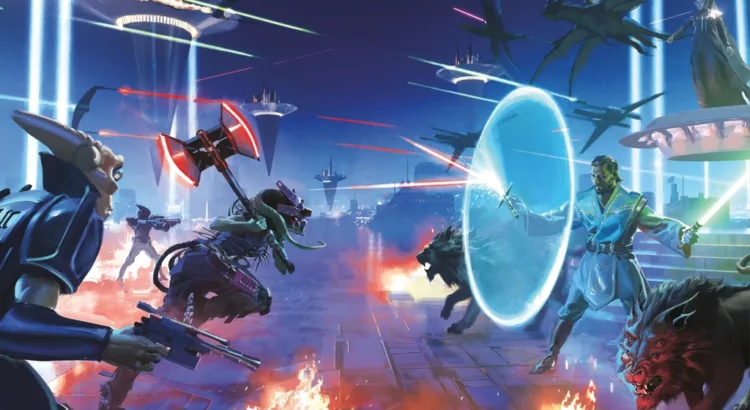This piece contains spoilers for the second wave of The High Republic,
including major spoilers for Out of the Shadows.
I’ve spent a lot of time defending Light of the Jedi over the past few months.
Not so much the book itself—most of the people I’ve spoken with were at least satisfied with it if not blown away—but specifically its tone where the Republic is concerned. In going quite so far out of its way to underline that this was a new! era! of optimism and belief in the government and people working together and so on and so forth, it’s fair to say that it ended up with a bit of a, um, West Wing problem. Watching people of good faith and peak competence run a government can be quite stirring if you’re prepared to take that premise at face value—but for a lot of people, simply being told that Lina Soh is a good chancellor just isn’t enough.
Especially not when the government she runs, stronger than Valorum’s though it may be, still plainly has its problems. How could a strong, benevolent chancellor cooperate with groups like the Byne Guild that thrive on indentured servitude? How could she not see how nakedly propagandistic a lavish Republic Fair would appear to people barely scraping by on the Rim, people too preoccupied with murderous raiders to worry about their planet getting its own Biscuit Baron? Worse, how could she not see how appealing a target that fair would be to those same raiders?
I gave Charles Soule a lot of leeway where Light‘s tone was concerned because it had a unique role as the first novel of a huge new initiative—the nonstop recitations of “we are all the Republic” made me think less of The West Wing than of Han Solo ruminating on the death of Chewbacca in Vector Prime:
“They had been living on the very edge of disaster for so very long, fighting battles, literally, for decades, running from bounty hunters and assassins. (…) So many times, it seemed, one or more of them should have died.
And yet, in a strange way, that close flirting with death had only made Han think them all the more invulnerable. They could dodge any blaster, or piggyback on the side of an asteroid, or climb out a garbage chute, or…
But not anymore. Now now. The bubble of security was gone, so suddenly, blown apart by a diving moon.
(…) to Han Solo, the galaxy suddenly seemed a more dangerous place by far.”
Light is a strong book on its own terms, don’t get me wrong—but like Vector before it, it’s also a marketing exercise; a flashing neon sign signaling to new or lapsed readers that THIS IS DIFFERENT FROM ALL THOSE OTHER STAR WARS BOOKS, AND HERE’S HOW.
I do think the High Republic creative team recognized how that was going to come across to some people, just like I think they recognized that the Republic Fair was also going to smack of colonialism to a lot of people. But while Cavan Scott’s The Rising Storm makes a point of demonstrating Soh’s willingness to roll up her sleeves and risk her own safety in the name of those oft-repeated ideals, I’m starting to think it’s a mistake to dwell on her at all.
Read More




